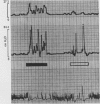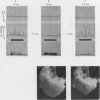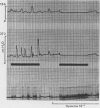Abstract
1. A rat stomach—duodenum preparation in which pressures in the body and the antrum and flow through the pylorus could be recorded simultaneously has been used to study the effects of pressure and pharmacologically active substances on the peristalsis induced by transmural stimulation.
2. Vagal and transmural stimulation produced vigorous peristalsis and episodic flow. Simultaneous stimulation of the peri-arterial nerves abolished peristalsis and relaxed the pylorus.
3. After repeated stimulation the preparation lost tone and peristalsis failed. Peristalsis and tone could then be improved by lowering intragastric pressure. Vigorous peristalsis could be restored in an inactive preparation by eserine and more transiently by 5-HT.
4. Drugs which increased smooth muscle tone improved peristalsis and, under the conditions used, they reduced flow. Eserine was more active in this respect than acetylcholine or 5-HT.
5. Adrenaline and hyoscine abolished peristalsis and caused the stomach and the pylorus to relax.
6. The results suggest that the peristaltic activity of the antrum is more important than the tone of the pylorus itself in controlling gastric emptying.
Full text
PDF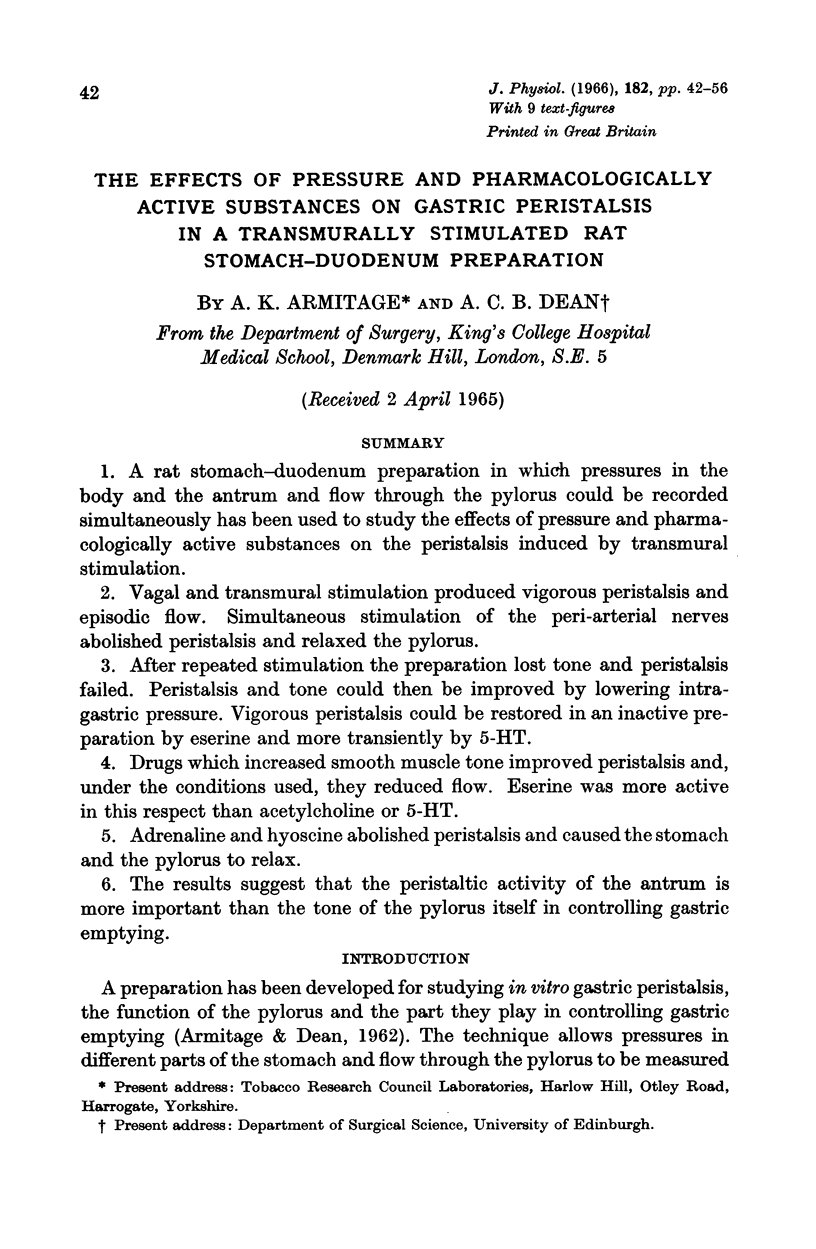

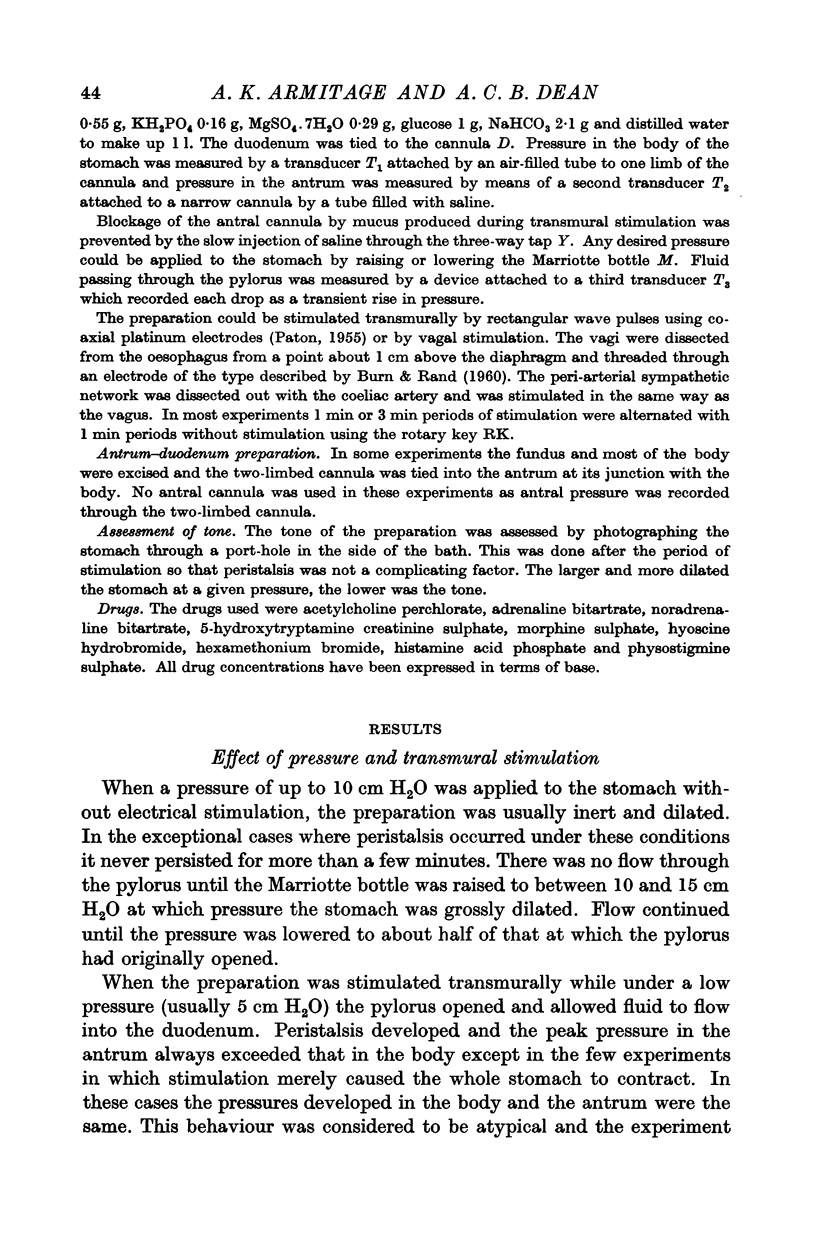


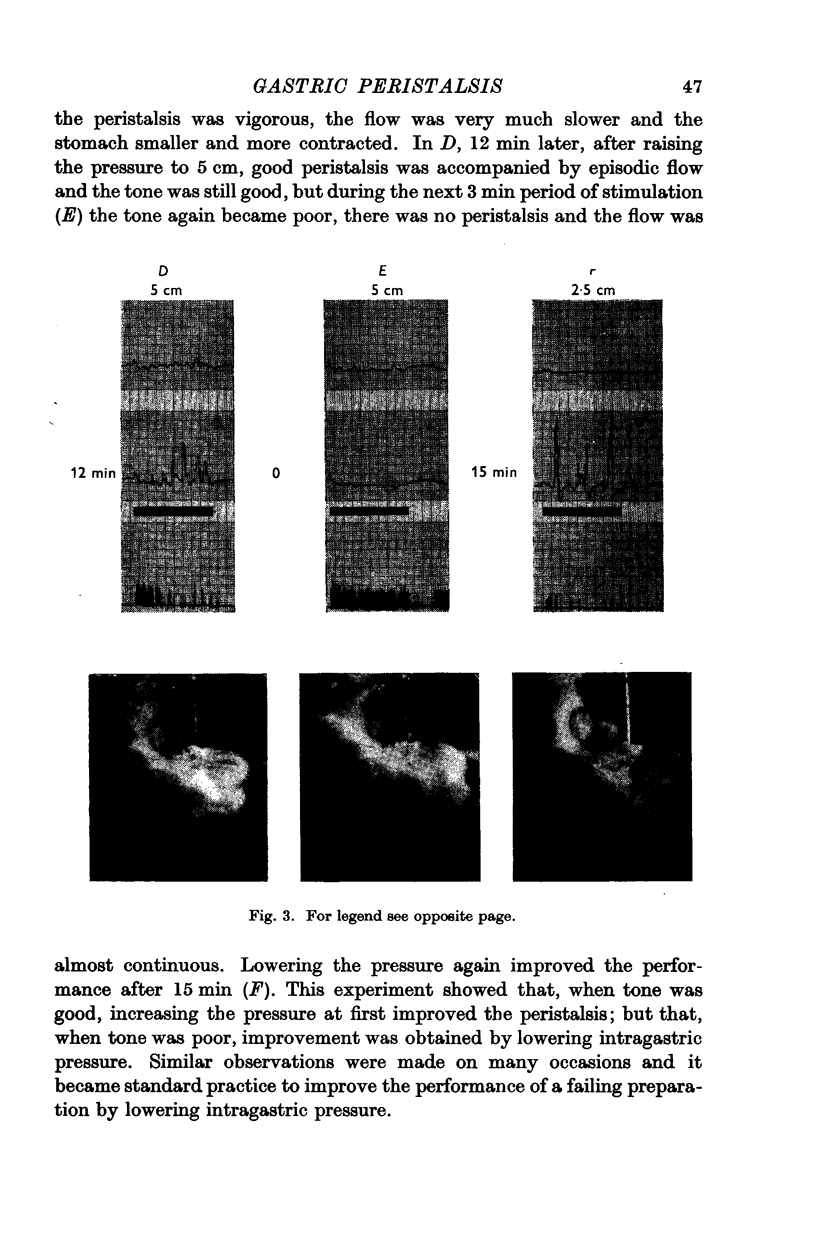
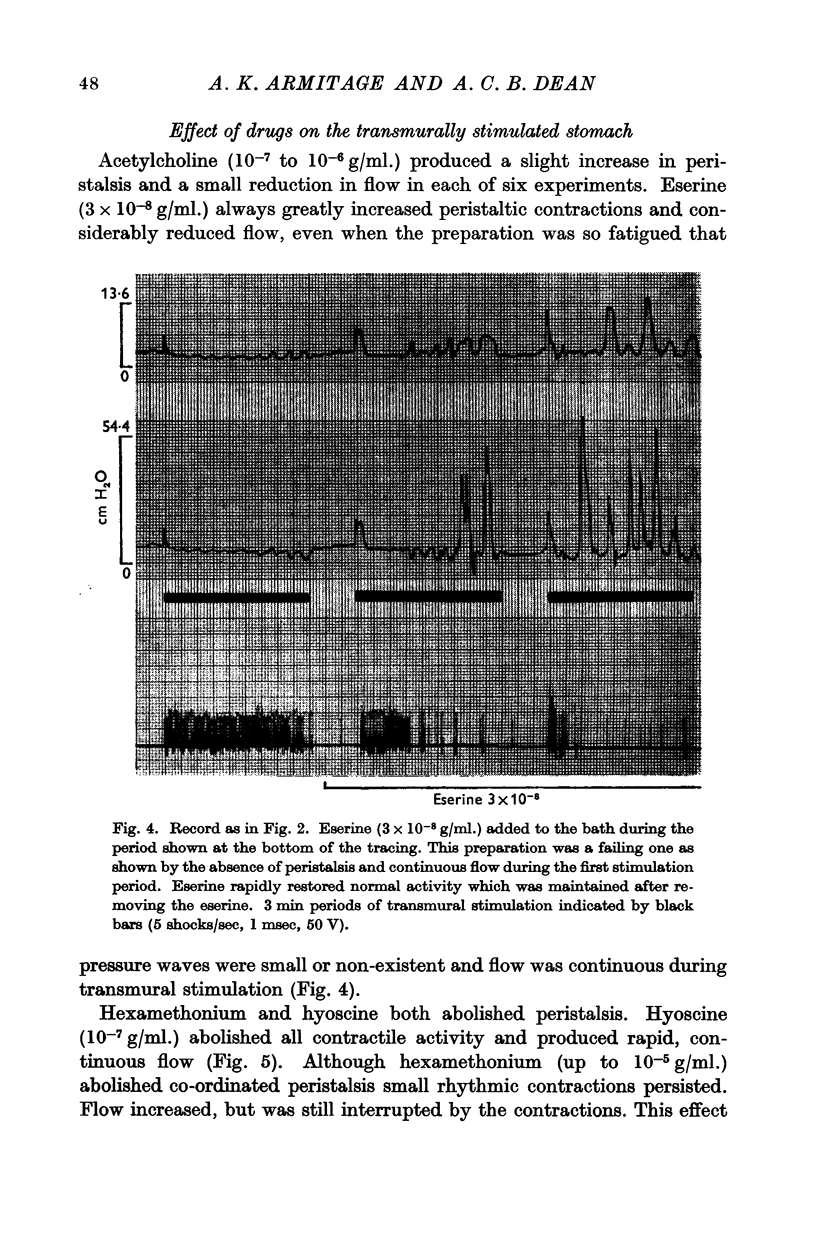
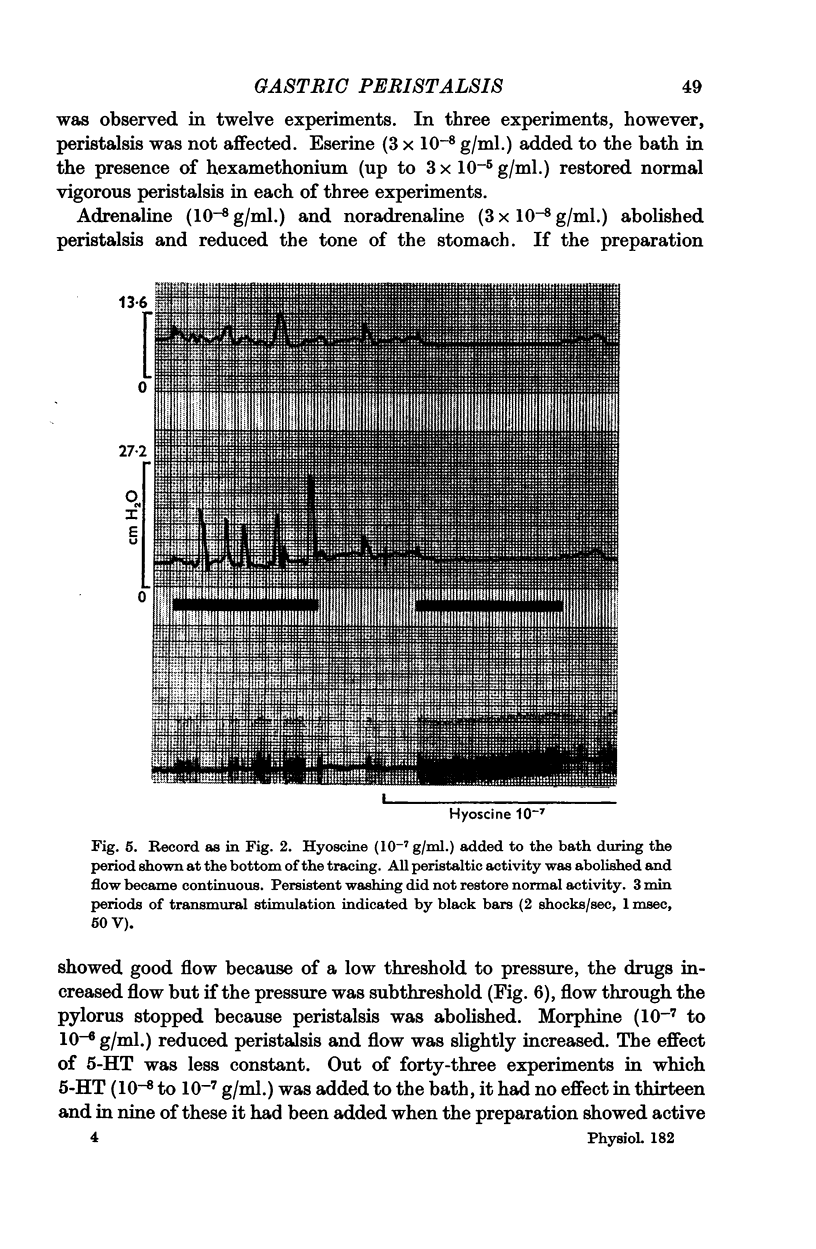

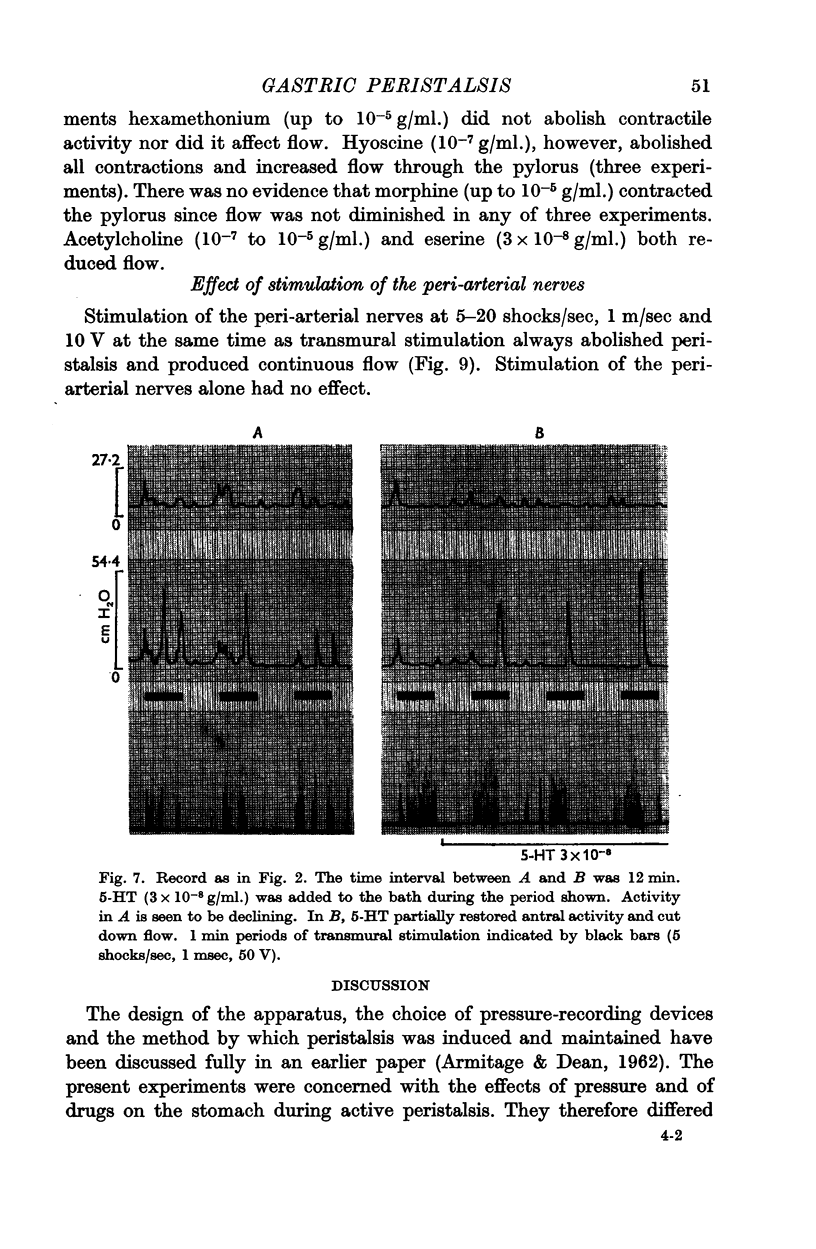
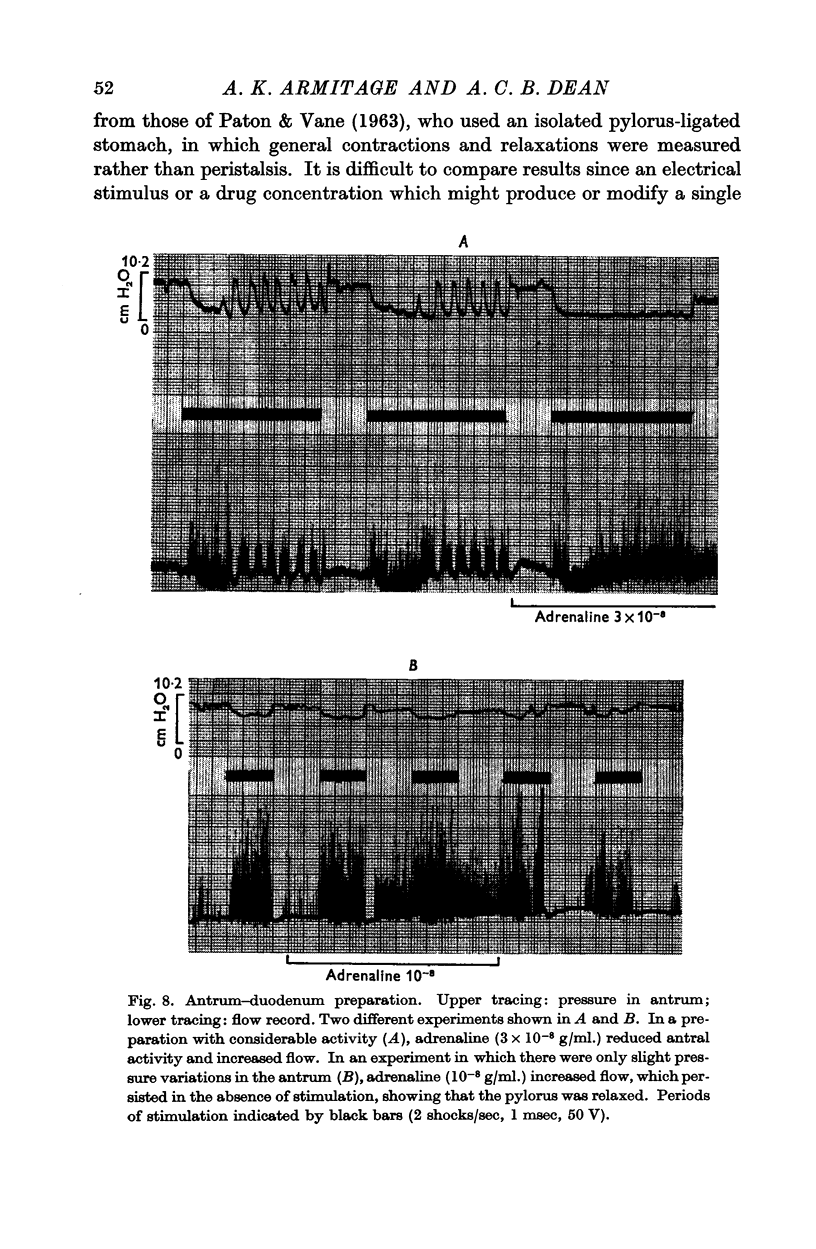
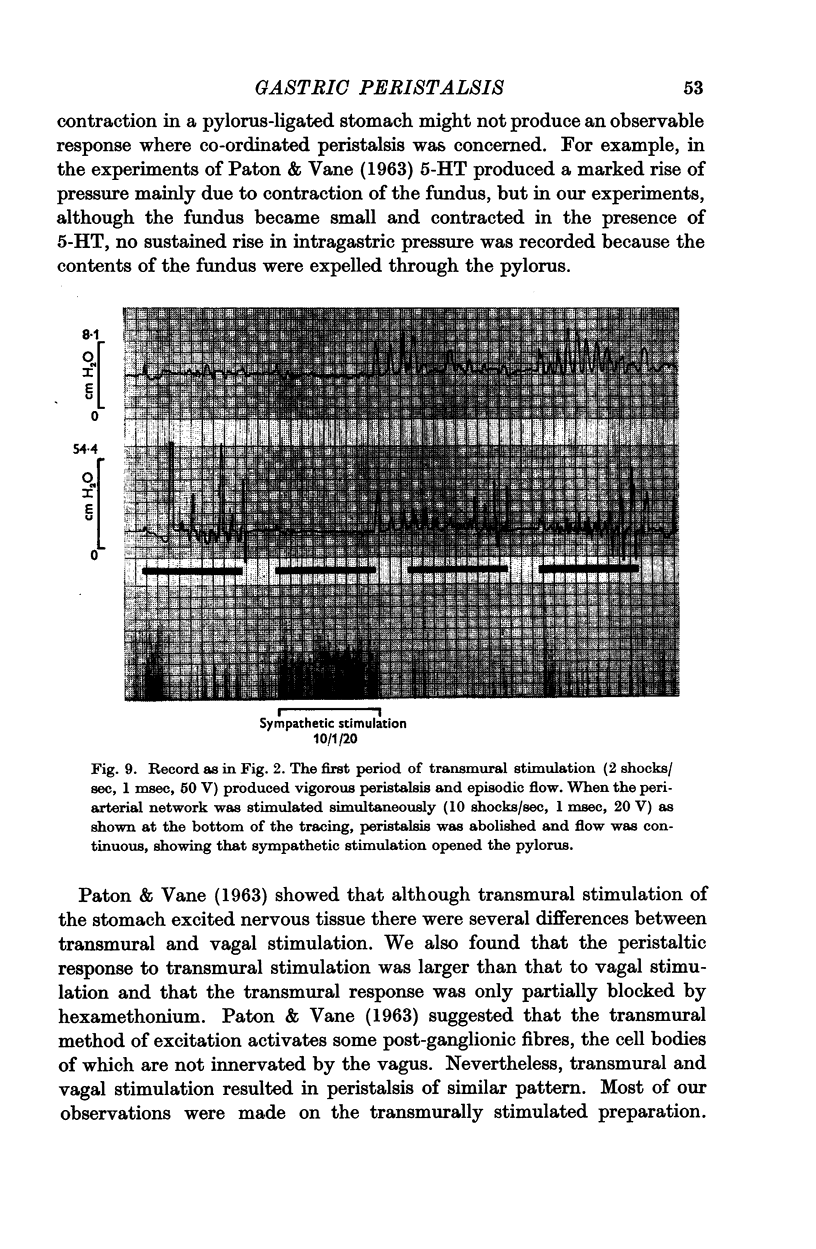

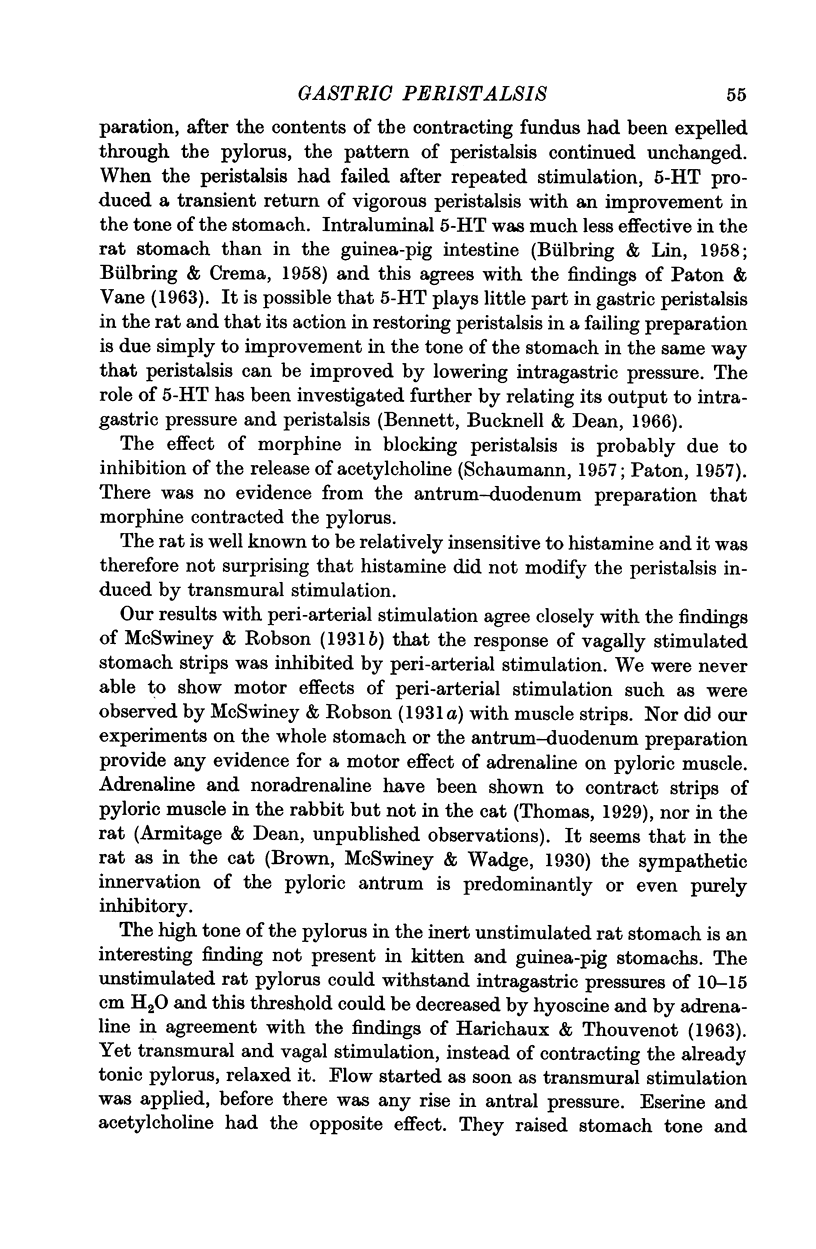
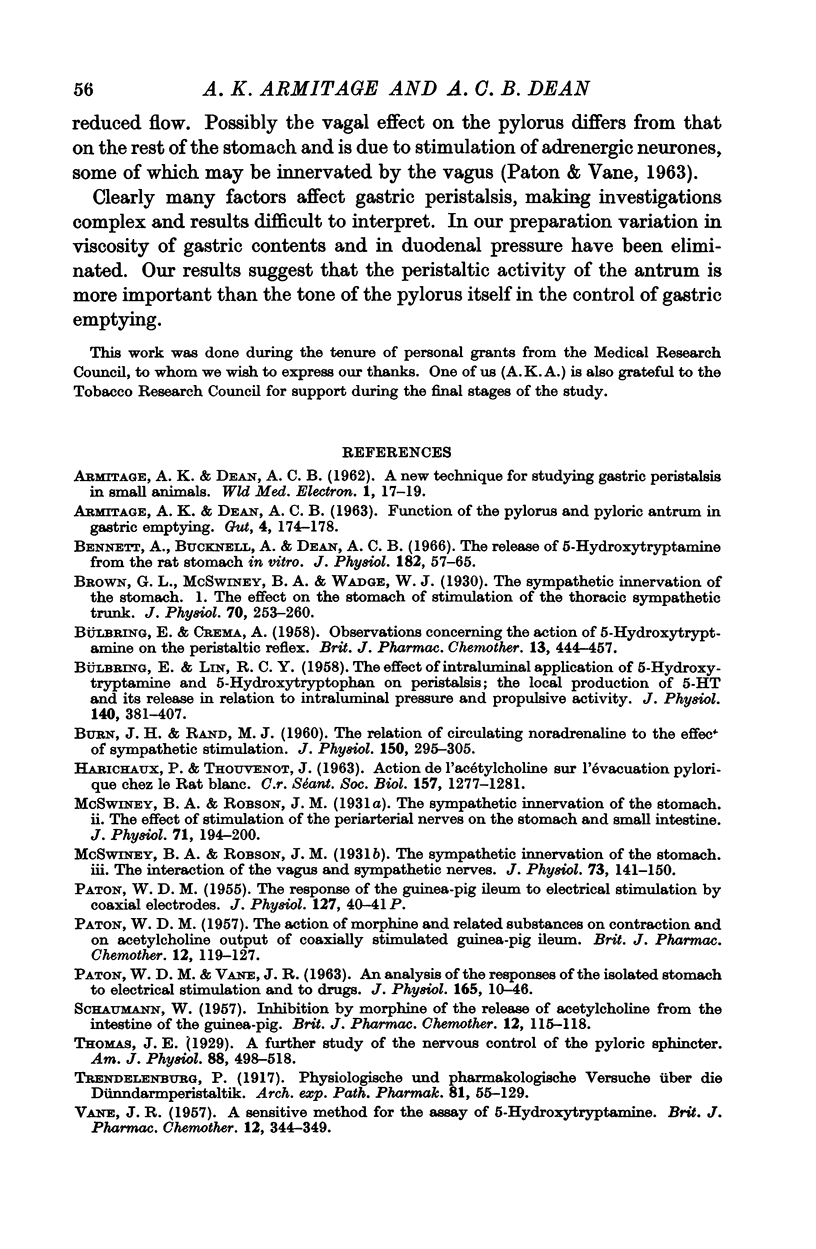
Images in this article
Selected References
These references are in PubMed. This may not be the complete list of references from this article.
- Armitage A. K., Dean A. C. Function of the pylorus and pyloric antrum in gastric emptying. Gut. 1963 Jun;4(2):174–178. doi: 10.1136/gut.4.2.174. [DOI] [PMC free article] [PubMed] [Google Scholar]
- BULBRING E., LIN R. C. The effect of intraluminal application of 5-hydroxytryptamine and 5-hydroxytryptophan on peristalsis; the local production of 5-HT and its release in relation to intraluminal pressure and propulsive activity. J Physiol. 1958 Mar 11;140(3):381–407. [PMC free article] [PubMed] [Google Scholar]
- BURN J. H., RAND M. J. The relation of circulating noradrenaline to the effect of sympathetic stimulation. J Physiol. 1960 Feb;150:295–305. doi: 10.1113/jphysiol.1960.sp006388. [DOI] [PMC free article] [PubMed] [Google Scholar]
- Bennett A., Bucknell A., Dean A. C. The release of 5-hydroxytryptamine from the rat stomach in vitro. J Physiol. 1966 Jan;182(1):57–65. doi: 10.1113/jphysiol.1966.sp007808. [DOI] [PMC free article] [PubMed] [Google Scholar]
- Brown G. L., McSwiney B. A., Wadge W. J. The sympathetic innervation of the stomach: I. The effect on the stomach of stimulation of the thoracic sympathetic trunk. J Physiol. 1930 Oct 31;70(3):253–260. doi: 10.1113/jphysiol.1930.sp002693. [DOI] [PMC free article] [PubMed] [Google Scholar]
- McSwiney B. A., Robson J. M. The sympathetic innervation of the stomach: II. The effect of stimulation of the peri-arterial nerves on the stomach and small intestine. J Physiol. 1931 Feb 25;71(2):194–200. doi: 10.1113/jphysiol.1931.sp002725. [DOI] [PMC free article] [PubMed] [Google Scholar]
- McSwiney B. A., Robson J. M. The sympathetic innervation of the stomach: III. The interaction of the vagus and sympathetic nerves. J Physiol. 1931 Oct 22;73(2):141–150. doi: 10.1113/jphysiol.1931.sp002802. [DOI] [PMC free article] [PubMed] [Google Scholar]
- PATON W. D. The action of morphine and related substances on contraction and on acetylcholine output of coaxially stimulated guinea-pig ileum. Br J Pharmacol Chemother. 1957 Mar;12(1):119–127. doi: 10.1111/j.1476-5381.1957.tb01373.x. [DOI] [PMC free article] [PubMed] [Google Scholar]
- PATON W. D., VANE J. R. Analysis of he responses of the isolated stomach to electrical stimulation and to drugs. J Physiol. 1963 Jan;165:10–46. doi: 10.1113/jphysiol.1963.sp007040. [DOI] [PMC free article] [PubMed] [Google Scholar]
- SCHAUMANN W. Inhibition by morphine of the release of acetylcholine from the intestine of the guinea-pig. Br J Pharmacol Chemother. 1957 Mar;12(1):115–118. doi: 10.1111/j.1476-5381.1957.tb01372.x. [DOI] [PMC free article] [PubMed] [Google Scholar]



